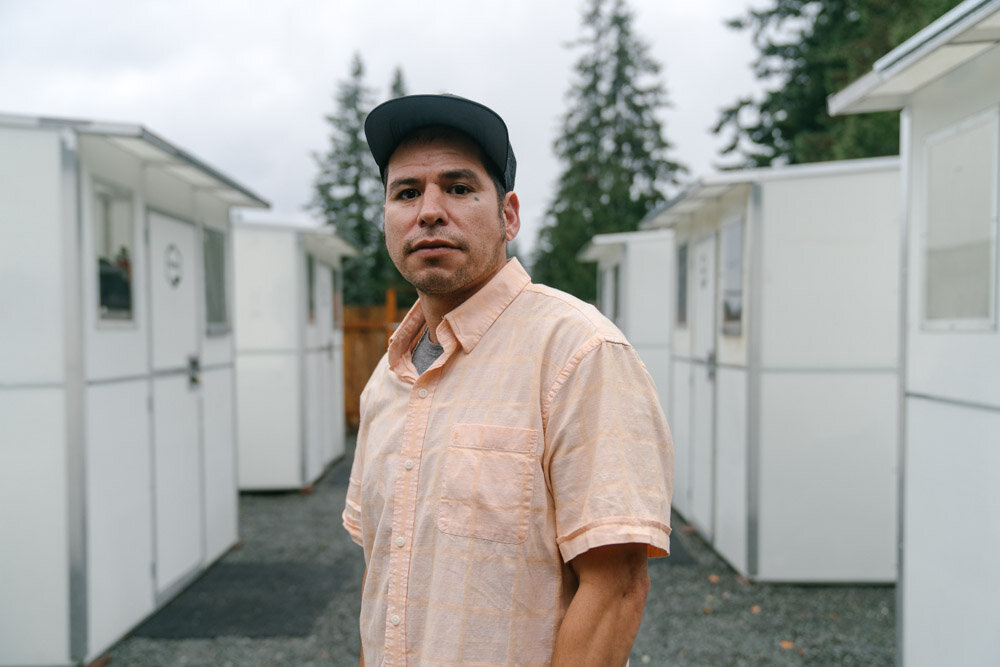5 Myths About Homelessness
January 9, 2020
As an organization that works closely with cities to reduce homelessness nationwide, Pallet comes across many varied perspectives on how to help people experiencing homelessness, the root causes of homelessness, and other related topics. We also hear many concerns about homelessness, some of which aren’t true.
To clear up some of these misconceptions, we’ve rounded up five myths about homelessness below and share the truth associated with each.
#1: Giving someone a job will solve their challenges with experiencing homelessness.
Many people who are experiencing homelessness are actually employed, and in some cases, these people have multiple jobs and still struggle to find a permanent home. Why? In many areas, minimum wage is not enough to afford a home because the cost of housing has outpaced wage growth. This is common in rapidly growing cities across America, and there are clear connections between the nation’s fastest growing cities and the rate of homelessness within those cities.
There are a long list of reasons someone experiences homelessness, such as addiction or health issues. If someone is suffering from addiction and gets a job, they become employed but still have to deal with their addictions - these issues don’t go away when someone finds employment, nor does the risk of experiencing homelessness.
That’s why Pallet provides a more comprehensive offering of benefits to its manufacturing employees, many whom have lived experience in addiction, incarceration, or homelessness themselves. Through job training, support services, and life skills training, Pallet works with its employees to ensure they have the community they need to get their lives back on track.

#2: All people experiencing homelessness are addicted to drugs, mentally unstable, or both.
While some people experience homelessness because of addiction, that’s just one of many reasons why someone might lose their home. Again, a variety of events can trigger someone to experience homelessness, such as domestic violence, health issues, addiction, or a long list of other reasons.
The impact of each of these events triggering homelessness alone is multiplied for individuals who have little to no social support network. Regardless of the cause of homelessness, homelessness almost always involves people up against extreme situations making choices in the face of desperate circumstances, with limited options available to them.
#3: We just need to build more shelters, affordable housing, etc.
While building more shelter and housing options provides more capacity for people experiencing homelessness, these structures alone will not address the root cause of homelessness in America. To use an analogy, imagine you have a leaking pipe in your ceiling, and it’s dripping into a bucket on the floor. At some point, the bucket will start overflowing with water, and you’ll likely find other buckets to catch the dripping water - but eventually they’ll fill, too. Ultimately, you need to stop finding buckets and address the source of the leak in the ceiling.
Our thoughts on homelessness are similar to this analogy: we believe that shelter is vitally important to “catch” as many people as possible in the short term, but just like the leaking pipe in the ceiling, you need to address the root cause of the matter. Both need to happen simultaneously, and you wouldn’t want to do one without the other for long term success.
The challenge is that building shelters, like finding a bucket, is relatively easy compared to addressing the root cause of homelessness. Better long term outcomes will require both shelter and personalized social services that address the needs of individuals experiencing homelessness.

#4: If we provide homeless services, many more people experiencing homelessness will move to our city.
We hear this a lot when we work with cities across the nation, who are concerned that their investment in helping people experiencing homelessness will draw thousands more people who need help, overwhelming their ability to provide assistance.
In reality, very few experiencing homelessness relocate to a new city for benefits provided by that city. A survey by The Seattle Times in King County (the county where the city of Seattle resides) recently asked almost 900 homeless people where they lived before they became homeless. The vast majority of people experiencing homelessness were living in the same county where they currently reside before they became homeless. In fact, just 5.6% of people surveyed moved from out of state to Seattle after becoming homeless, and of those people, just 3.4% said they moved to King County specifically for homeless or veteran services. Studies conducted by universities and organizations in other states produce similar results, finding that the vast majority of people experiencing homelessness are longtime residents of the state where they’re currently homeless.
#5: Everyone experiencing homelessness has chosen to be homeless.
This myth is especially damaging, as it implicitly suggests that people experiencing homelessness have the ability to pull themselves out of their situation whenever they make the choice to do so - and that they just haven’t made that choice yet. In reality, people experience homelessness for a variety of reasons, and often need a community of support to work through their personal challenges and find permanent housing.
We believe that every person experiencing homelessness has a limited variety of choices available to them, and will make the best choice they can given their capacity to make that choice and their situation that day.
Some point to vacant beds at mass shelters as proof that people experiencing homelessness are making a choice to stay on the streets when shelter is available. In reality, mass shelter isn’t an option for everyone. For example, many mass shelters in cities across America are available only for a single gender or don’t allow pets, and families experiencing homelessness would need to split up to access these shelters. That’s why Pallet’s shelters are designed for personal shelter, so that families and their pets can stick together as they transition to permanent shelter.
Similarly, many mass shelters don’t allow large quantities of personal belongings. Even if personal belongings are allowed, they can be difficult to transport to the shelter.


